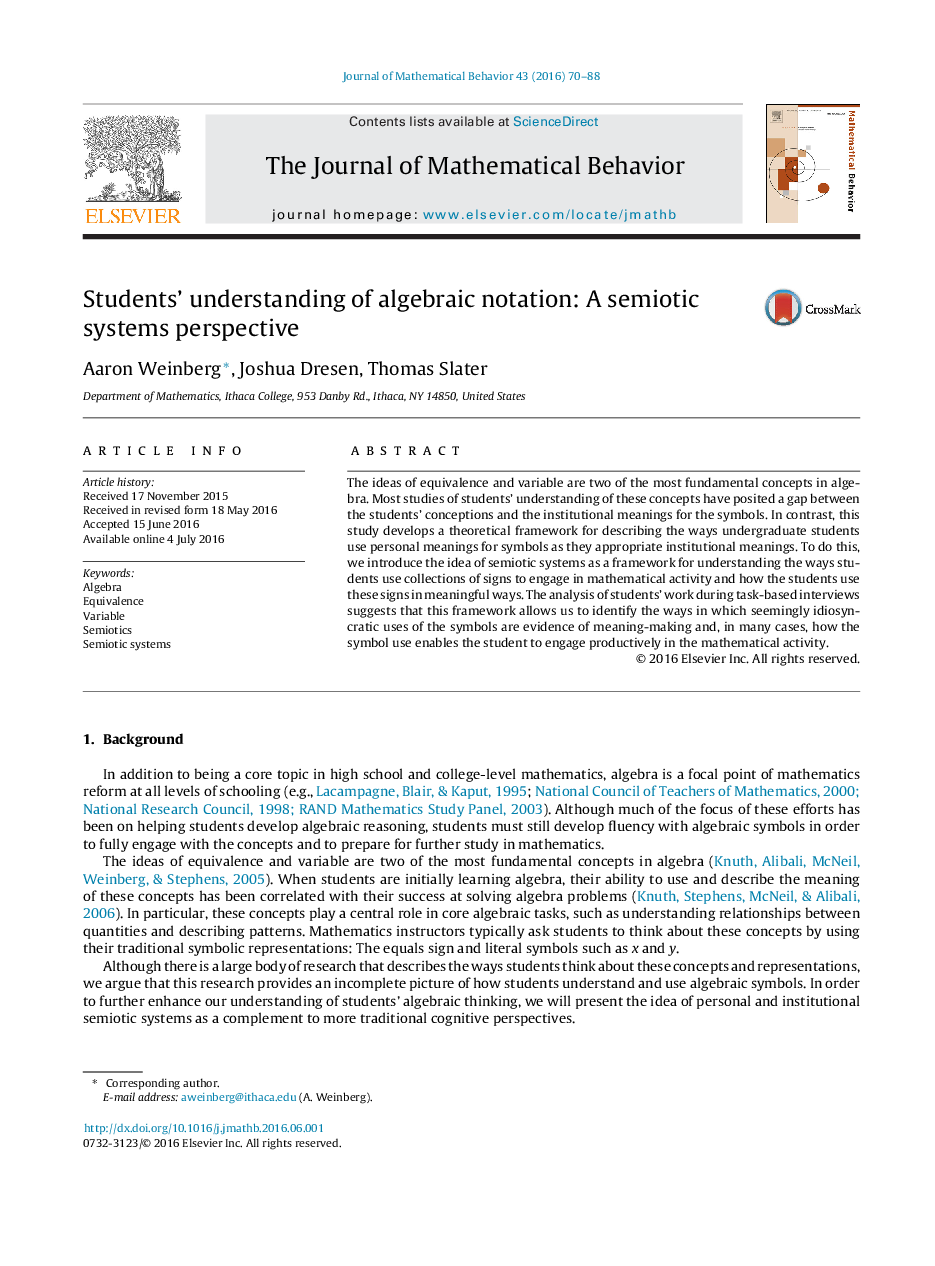| Article ID | Journal | Published Year | Pages | File Type |
|---|---|---|---|---|
| 360613 | The Journal of Mathematical Behavior | 2016 | 19 Pages |
•Undergraduate mathematics students use algebraic symbols in idiosyncratic ways.•A semiotic systems perspective shows students’ work as productive and meaningful.•Personal semiotic systems are situated within institutional semiotic systems.•Conceptual hurdles can be recast in terms of appropriation of institutional systems.
The ideas of equivalence and variable are two of the most fundamental concepts in algebra. Most studies of students’ understanding of these concepts have posited a gap between the students’ conceptions and the institutional meanings for the symbols. In contrast, this study develops a theoretical framework for describing the ways undergraduate students use personal meanings for symbols as they appropriate institutional meanings. To do this, we introduce the idea of semiotic systems as a framework for understanding the ways students use collections of signs to engage in mathematical activity and how the students use these signs in meaningful ways. The analysis of students’ work during task-based interviews suggests that this framework allows us to identify the ways in which seemingly idiosyncratic uses of the symbols are evidence of meaning-making and, in many cases, how the symbol use enables the student to engage productively in the mathematical activity.
